Redefining Beauty: The Power of Swazi Traditional Dresses in Empowering Women
Redefining Beauty: The Power of Swazi Traditional Dresses in Empowering Women
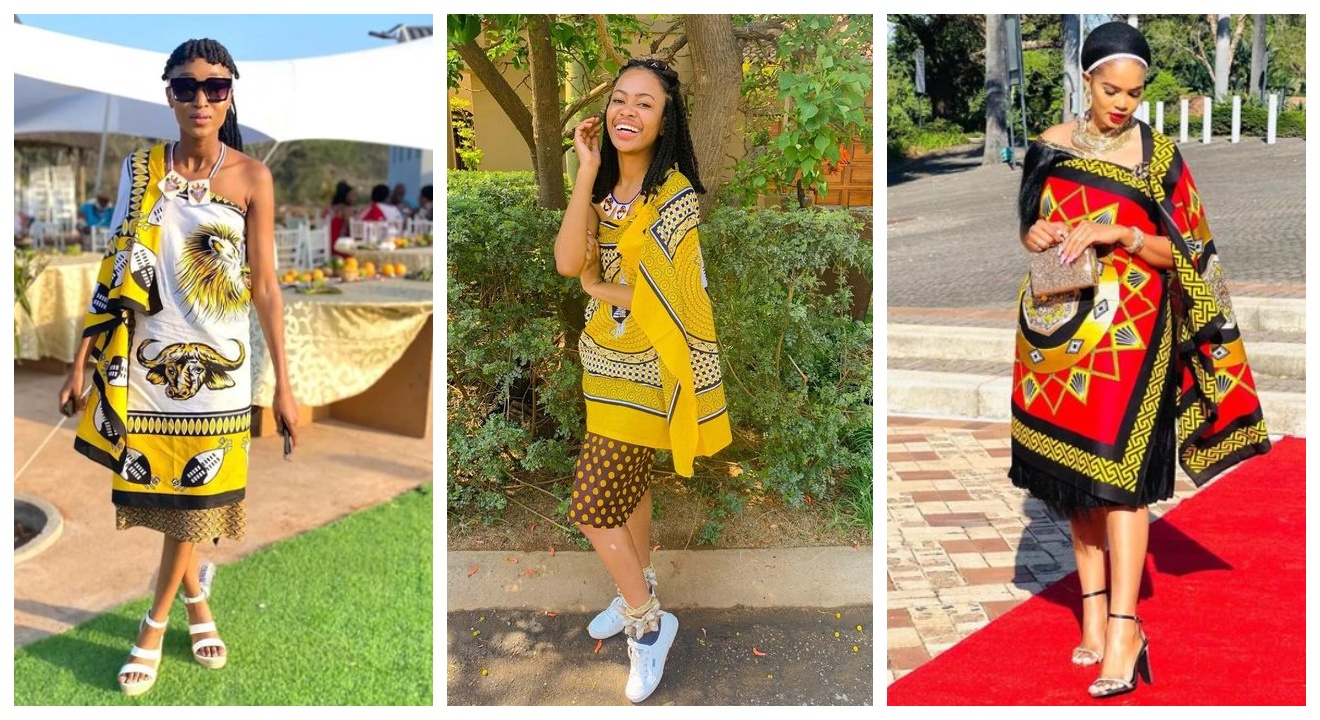
Introduction
Swazi traditional dresses have long been a symbol of cultural identity and pride among the women of Eswatini. These vibrant garments not only showcase the rich heritage of the Swazi people but also hold significant power in empowering women. By understanding the background and cultural context of Swazi traditional dresses, we can appreciate the journey of self-expression and women’s empowerment that these garments represent.
Background of Swazi Traditional Dresses and Their Significance in Empowering Women
For centuries, Swazi traditional dresses have been an integral part of Swazi culture. They serve as a form of identity and self-expression for women, allowing them to embrace their cultural heritage and showcase their individuality. These dresses are meticulously handcrafted with vibrant colors and intricate beadwork, representing the creativity and skill of the Swazi people.
Furthermore, Swazi traditional dresses have played a significant role in empowering women in Eswatini. They provide a sense of pride and confidence, reminding women of their strength and resilience. By wearing these dresses, women not only preserve their culture but also assert their presence and voice in society. Swazi traditional dresses have become a symbol of female empowerment, breaking stereotypes and celebrating women’s beauty and individuality.
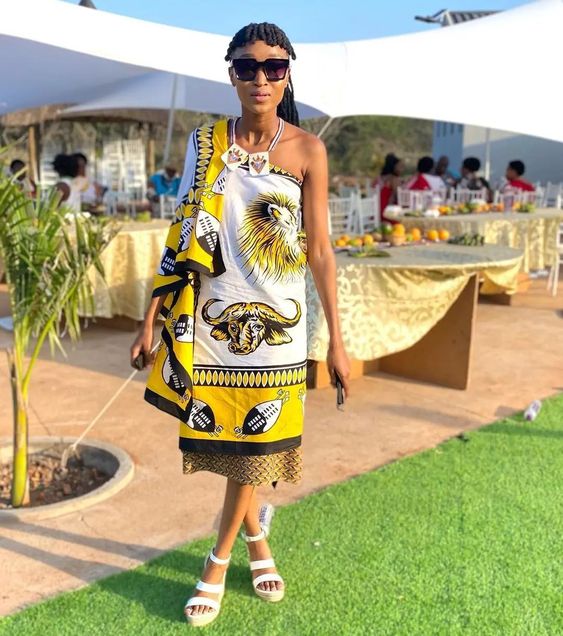
Historical and Cultural Context of Swazi Traditional Attire
The history and cultural significance of Swazi traditional attire date back centuries. These dresses are deeply rooted in the Swazi culture and have evolved over time to embody the traditions, values, and beliefs of the Swazi people. Each dress tells a story, reflecting the social and historical context of Eswatini.
Traditionally, Swazi women would craft their own dresses, passing down the knowledge and skills from generation to generation. The process of creating these garments was a communal effort, bringing women together and strengthening their bonds.
Today, Swazi traditional dresses are not only worn for special occasions and ceremonies but have also become a symbol of cultural pride and identity. They are embraced by women of all ages, bridging the gap between generations and ensuring the preservation of Swazi traditions.
In conclusion, Swazi traditional dresses hold immense power in empowering women in Eswatini. These garments embody the rich cultural heritage and serve as a medium for self-expression and celebration of women’s beauty and individuality. By understanding the background and cultural context of Swazi traditional dresses, we can truly appreciate the significance they hold in empowering women and redefining beauty.
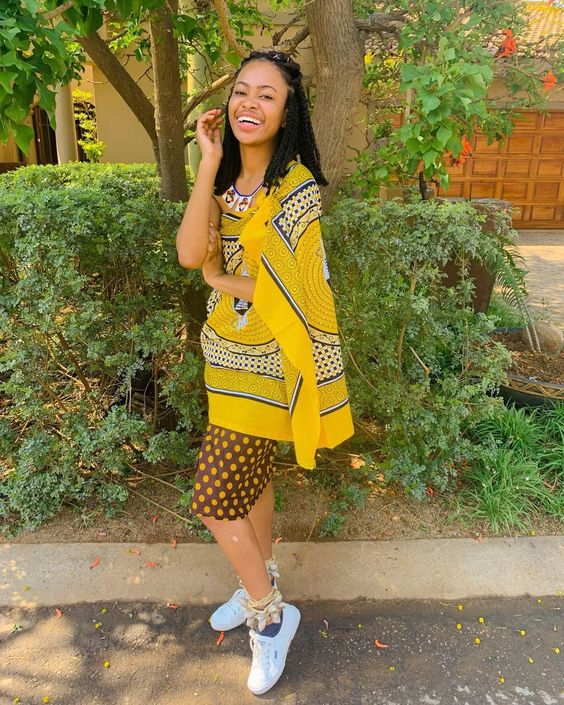
The Evolution of Swazi Traditional Dresses
Traditional dress patterns and designs
Swazi traditional dresses have evolved over time, showcasing a wide range of patterns and designs. These dresses are intricately woven with vibrant colors and adorned with beautiful beadwork, symbolizing the creativity and skill of the Swazi people. Traditional dress patterns often include geometric shapes, animal prints, and floral motifs, each holding its own significance within the culture. These unique designs not only add visual appeal but also serve as a form of cultural expression and identity for Swazi women.
Influence of modern fashion on Swazi traditional attire
While Swazi traditional dresses hold deep cultural roots, they have also been influenced by modern fashion trends. The introduction of new fabrics and materials has allowed for more diverse designs and styles. Swazi women have embraced this evolution by incorporating contemporary elements into their traditional attire, resulting in a fusion of traditional and modern fashion aesthetics. This blending of styles has allowed Swazi traditional dresses to remain relevant while preserving the cultural heritage they represent.
In conclusion, the evolution of Swazi traditional dresses showcases the dynamic nature of this cultural attire. Through intricate patterns and the influence of modern fashion, these dresses continue to empower and inspire Swazi women, redefining beauty and celebrating the rich heritage of Eswatini.
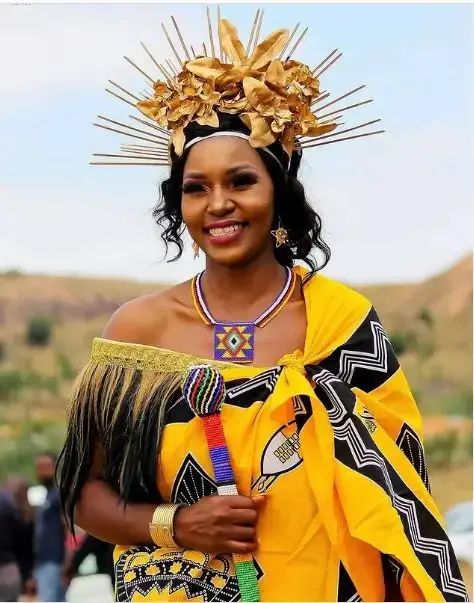
The Symbolism of Swazi Traditional Dresses
Swazi traditional dresses hold deep symbolism and play a powerful role in empowering women. The use of colors and patterns in these dresses is not just for aesthetic purposes; it conveys messages and represents different aspects of the Swazi culture. Vibrant colors and intricate patterns are carefully chosen to symbolize fertility, wealth, status, and even emotions. Each color and pattern holds a specific meaning, allowing women to express themselves and communicate their identity through their attire.
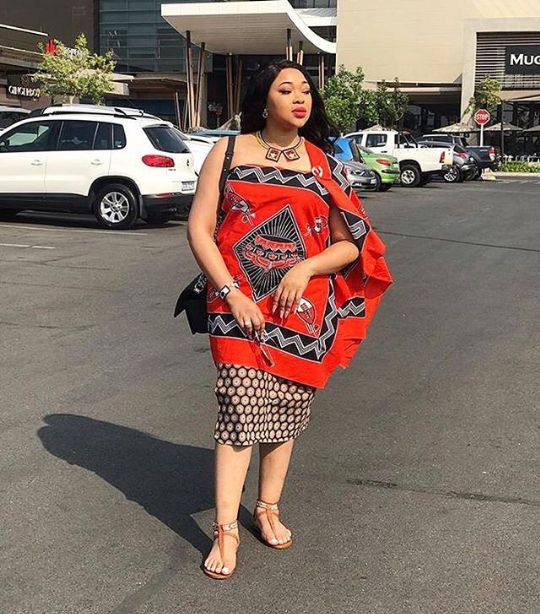
The use of colors and patterns to convey messages
Colors such as red symbolize love and passion, while blue represents peace and tranquility. Geometric patterns may represent a connection to the earth and nature, while floral motifs symbolize growth and beauty. By wearing these dresses, Swazi women proudly showcase their cultural heritage and highlight their individuality. The symbolism in Swazi traditional dresses serves as a reminder of the rich history and values of the Swazi people.
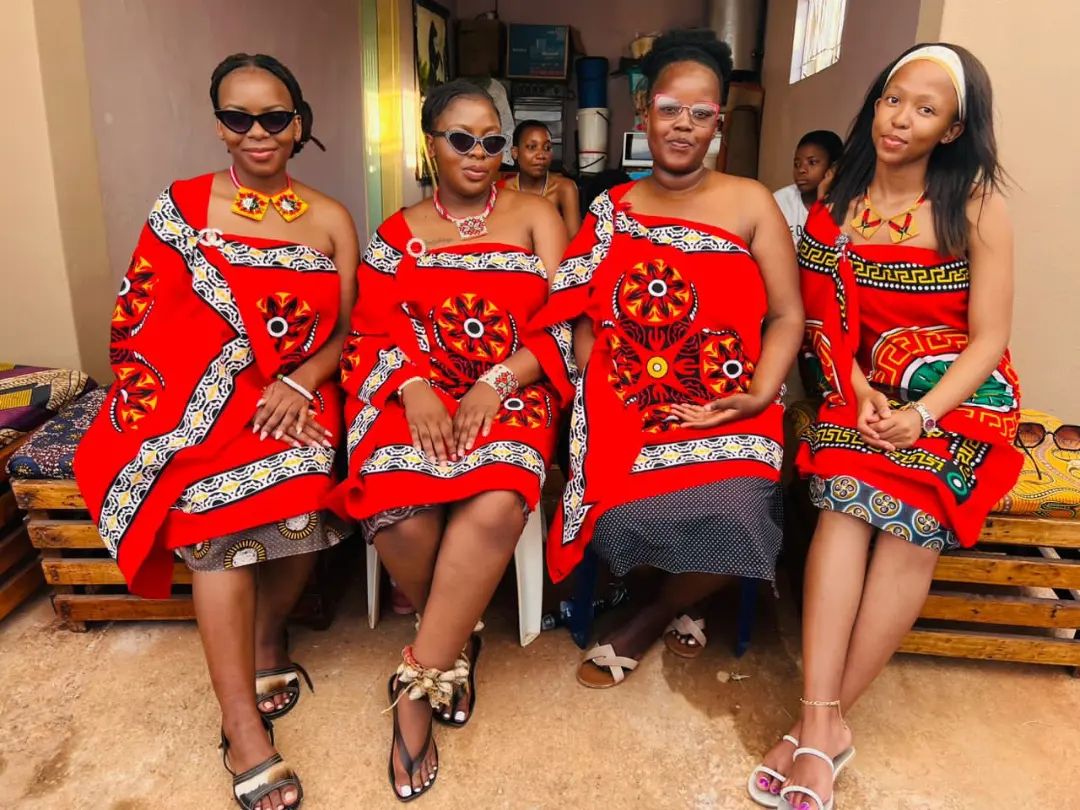

Role of traditional attire in celebrations and ceremonies
Swazi traditional dresses play a central role in celebrations and ceremonies. Whether it is a wedding, a festival, or a traditional dance, women adorn themselves in intricately woven dresses to honor and preserve their cultural traditions. These dresses not only celebrate the beauty of Swazi culture but also empower women by allowing them to feel confident and connected to their roots. Through the power of their traditional attire, Swazi women uplift and inspire themselves and their communities.
In conclusion, Swazi traditional dresses have a profound impact on empowering women. Through the use of colors and patterns, these dresses convey meaningful messages and allow women to express their identity. Additionally, the role of traditional attire in celebrations and ceremonies strengthens the cultural bond and instills a sense of pride and empowerment. Swazi traditional dresses are a testament to the power of redefining beauty and honoring cultural heritage.
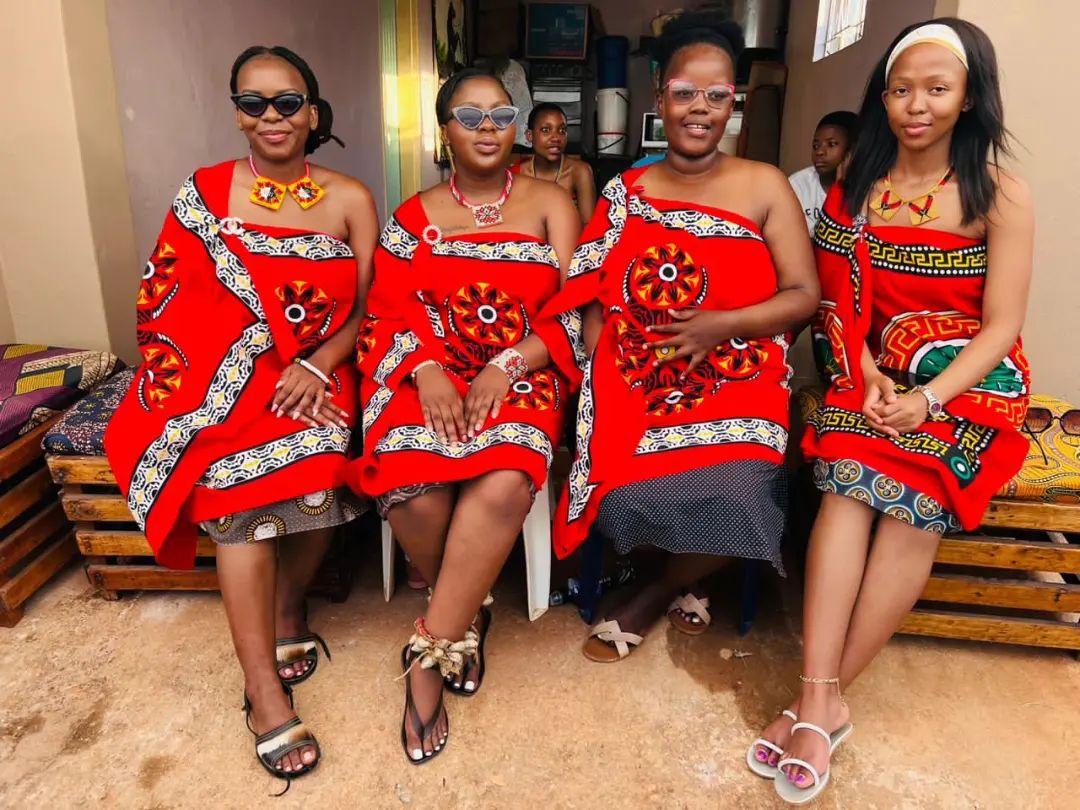
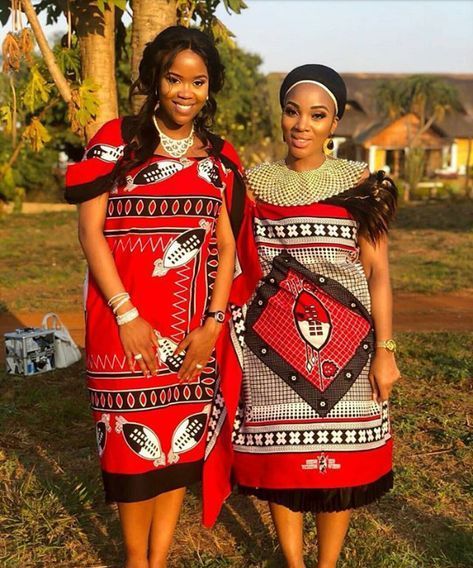
Empowerment Through Swazi Traditional Dresses
Swazi traditional dresses have a remarkable power in empowering women by promoting cultural identity and pride. These dresses serve as a visual representation of the Swazi culture, allowing women to showcase their heritage and express their unique identity. By wearing these traditional dresses, women feel a sense of belonging and connection to their roots, instilling a deep pride in their cultural heritage. Additionally, the creation and sale of traditional dresses provide a source of economic empowerment for Swazi women. They are able to utilize their skills in weaving and designing to create these exquisite dresses, which are in high demand both locally and internationally. Through the sale of these dresses, women are able to generate income and support themselves and their families, giving them a sense of financial independence and empowerment.
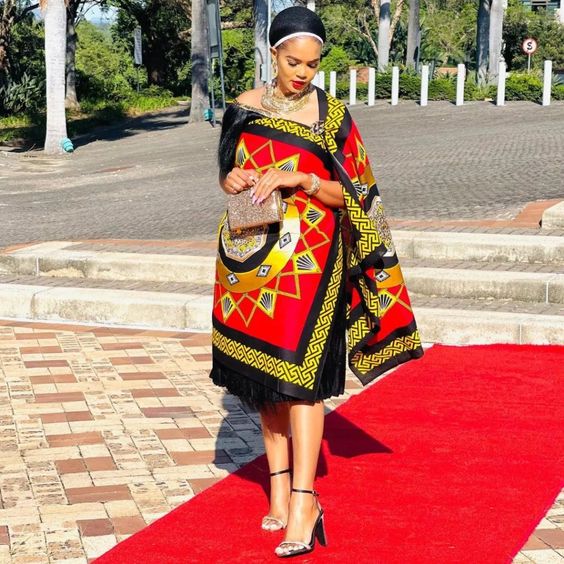
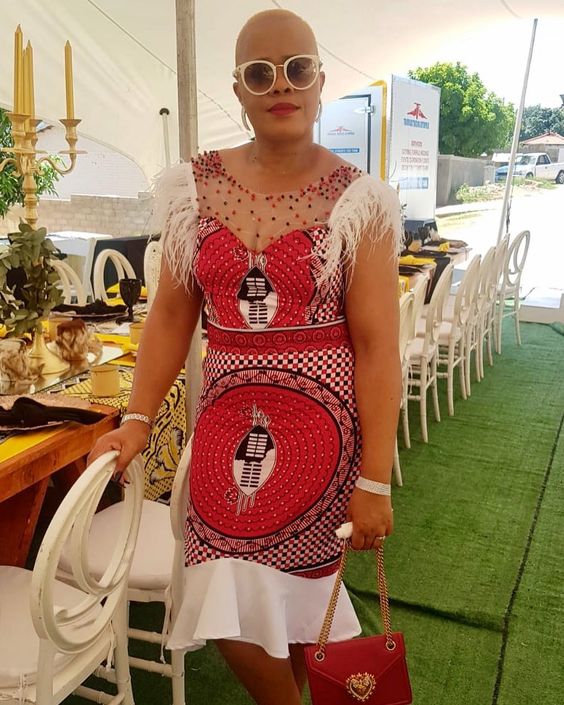
Redefining Beauty: The Power of Swazi Traditional Dresses in Empowering Women
Swazi traditional dresses have proven to be a powerful tool in empowering women by redefining beauty and promoting cultural identity. These dresses serve as a visual representation of the rich Swazi culture, allowing women to showcase their heritage and express their unique identity. By wearing these traditional dresses, women not only feel a sense of belonging and connection to their roots, but they also instill a deep pride in their cultural heritage.
The creation and sale of these traditional dresses also provide a source of economic empowerment for Swazi women. Many women utilize their skills in weaving and designing to create these exquisite dresses, which are in high demand both locally and internationally. Through the sale of these dresses, women are able to generate income and support themselves and their families, giving them a sense of financial independence and empowerment.
However, preserving and promoting Swazi traditional dresses in a modern society does come with its challenges. The increasing influence of Western fashion trends and changing societal norms pose a threat to the traditional dress culture. Therefore, it is important for the Swazi community to work together to preserve and promote the significance of these traditional dresses.
Collaboration and innovation are crucial in expanding the market for Swazi traditional dresses. By working together with local designers, artisans, and fashion enthusiasts, the traditional dress industry can find new ways to market and showcase these cultural gems. This collaboration can lead to the creation of unique designs that merge traditional craftsmanship with modern fashion sensibilities, appealing to a wider audience and ensuring the longevity of Swazi traditional dresses.
In conclusion, Swazi traditional dresses have the power to redefine beauty and empower women by promoting cultural identity and providing economic opportunities. By preserving and promoting these dresses in a modern society through collaboration and innovation, the Swazi community can ensure that the legacy of these dresses continues to inspire and empower future generations of women.
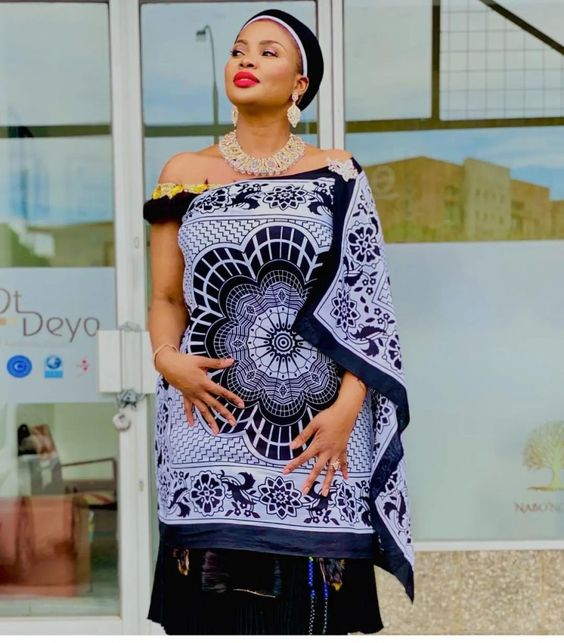
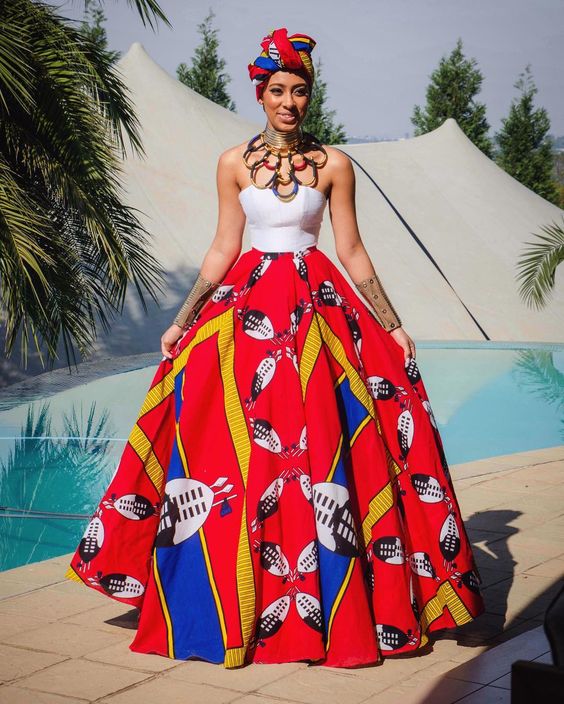
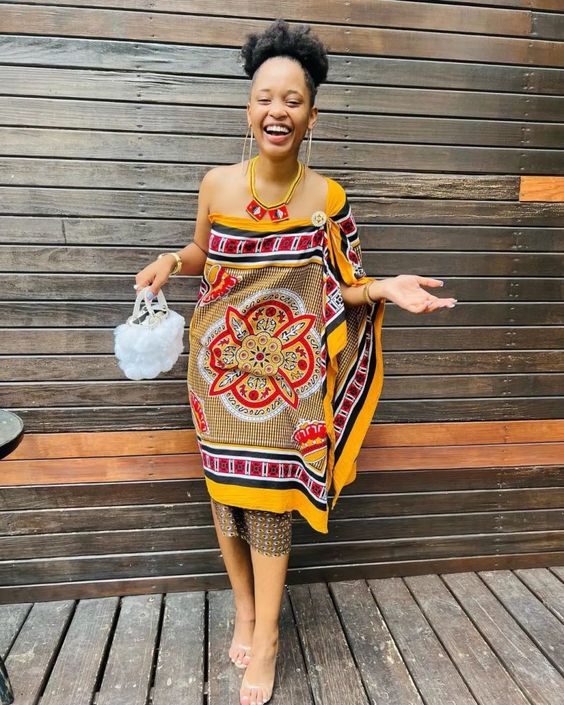
Comments are closed.